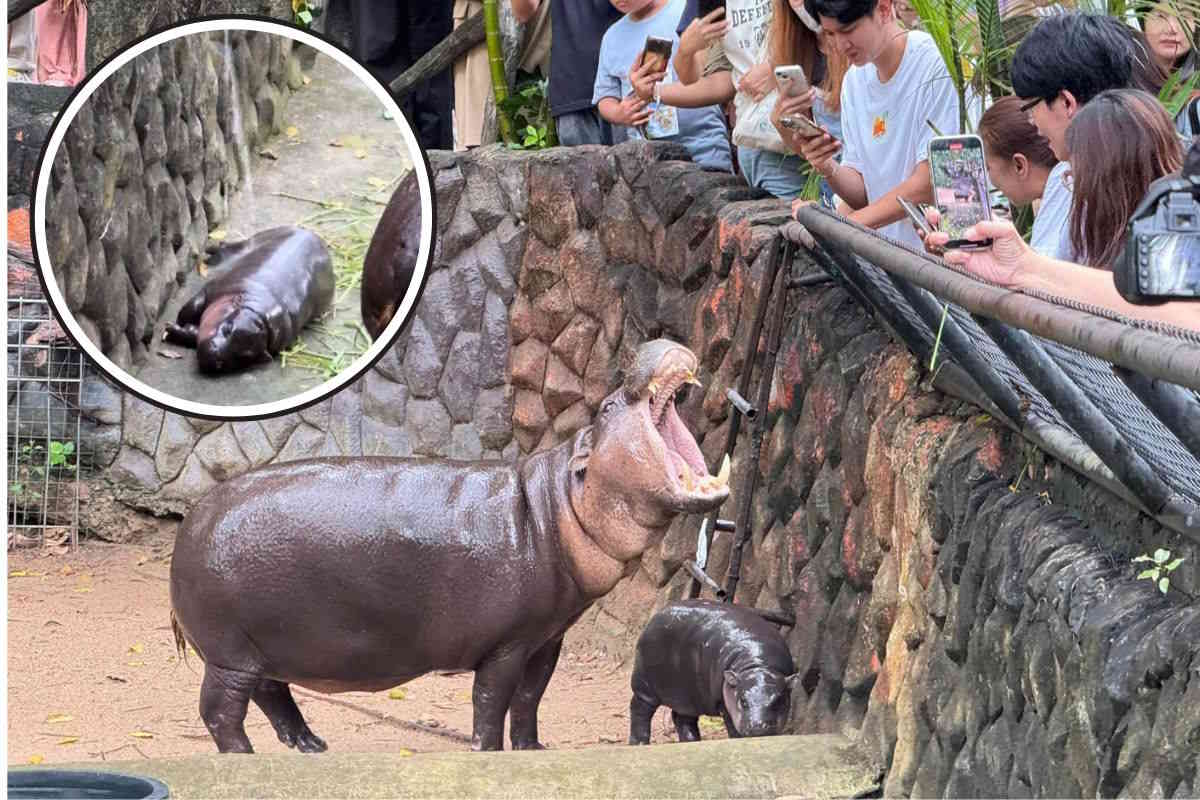Shameful behavior in a zoo in Thailand, where the public disturbed a baby pygmy hippopotamus to get its attention. The videos released by the facility show people throwing water on the animal, which, not being a freak, rests with its mother rather than entertaining visitors

@สวนสัตว์เปิดเขาเขียว Khao Kheow Open Zoo/Facebook – X
A young female pygmy hippo, Moo Deng has become an Internet sensation and the beloved mascot of Thailand’s Khao Kheow Open Zoo, thus drawing mass visitors from every part of the country. The sad part, though, is that to get a photo, some of these visitors do not spare her even from the most inhumane acts.
Thousands flock just to see her
Moo Deng overnight sensation hit the headlines right after the zoo management announced her birth on their social media pages and presented her to the public. Thousands purchased tickets for a view of the baby hippo, unprecedented numbers, it is said. “Forced, the zoo staff had to arrange guided tours of only a few minutes each through the hippo enclosure, barring access to the area during weekends.
น้อง #หมูเด้ง จะตื่นมาเด้งในช่วงเช้า 8 โมงถึง 9 โมง “โดยเฉพาะช่วงที่โดนอาบน้ำ” แล้วกลับไปนอนต่อ ก่อนจะตื่นมาเด้งอีกครั้งในช่วงบ่าย 2 แวะมาหาได้นะ
Posted by สวนสัตว์เปิดเขาเขียว Khao Kheow Open Zoo on Thursday, September 12, 2024
But there is yet another reason, more distressing than this, that the restrictions were made, coupled with warning signs around the pygmy hippo enclosure. Moo Deng is only active a couple of hours each day, and spends most of her time sleeping.
These characteristics of nature have frustrated many visitors who, irritated by an apparent lack of activity, have gone to extremes to get the attention of the young animal. Unfortunately, such attempts have been abusive.
เช้านี้แฟนคลับ #น้องหมูเด้ง เยอะแต่เช้า😍🥰
Posted by สวนสัตว์เปิดเขาเขียว Khao Kheow Open Zoo on Thursday, September 12, 2024
The other hippo has been subjected to the most adverse and inappropriate behaviour from several onlookers, who have thrown food or garbage at the little hippo, going to the point of pouring water on her to wake her up in order to try to get her to interact somehow with her mother.
ไม่น่ารักเลย อย่าทำนะคะ #หมูเด้ง #ฮิปโปแคระ #สวนสัตว์เปิดเขาเขียว pic.twitter.com/FkBrQGh9TD
— ขาหมู แอนด์เดอะแก๊งFC (@khamoo_fc) September 10, 2024
The Khao Kheow Open Zoo staff has to remind the visitors of the legal risks they may be running into, to reiterate the rules of this zoo, and to appeal to those instincts of common sense and decency which everyone should show.
Zoos should never be, and let’s stress the conditional, a place of entertainment comparable to circuses. Jokingly said, some activities provided by single facilities, for example, photo shooting with wild animals, only help nurture this kind of perception about zoos-as-amusement-parks misunderstanding. And that is something that has to be changed if people want to secure a future with welfare for animals like Moo Deng.
Source: สวนสัตว์เปิดเขาเขียว Khao Kheow Open Zoo/Facebook – X
